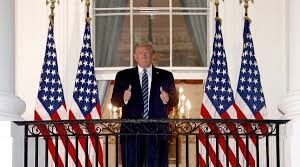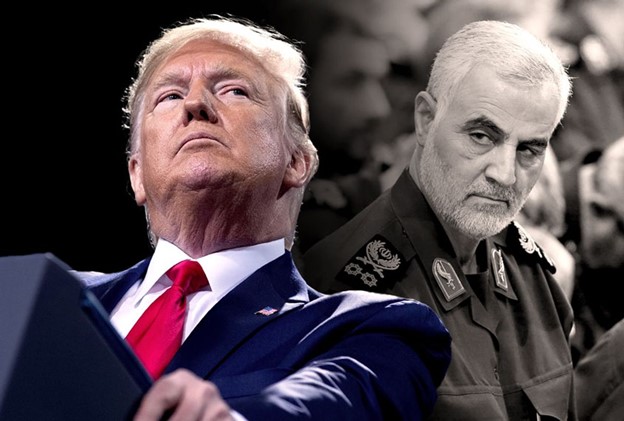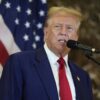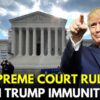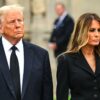On 3 January 2020, Qasem Soleimani, an Iranian major general, was killed by an American drone strike near Baghdad International Airport, Iraq, while travelling to meet Iraqi Prime Minister Adil Abdul-Mahdi.
Soleimani was commander of the Quds Force, one of five branches of Iran’s Islamic Revolutionary Guard Corps (IRGC), which is designated as a terrorist organization by both the United States and European Parliament. Soleimani was considered the second most powerful person in Iran, subordinate to Supreme Leader Ali Khamenei. Five Iraqi nationals and four other Iranian nationals were killed alongside Soleimani, including the deputy chairman of Iraq’s Popular Mobilization Forces (PMF) and commander of the Iran-backed Kata’ib Hezbollah militia, Abu Mahdi al-Muhandis—a person designated as a terrorist by the U.S. and the United Arab Emirates (UAE). The Pentagon says Soleimani and his troops were “responsible for the deaths of hundreds of American and coalition service members and the wounding of thousands more.”
The strike occurred during the 2019–2022 Persian Gulf crisis, which began after the U.S. withdrew from the 2015 nuclear deal with Iran in 2018, reimposed sanctions, and accused Iranian elements of fomenting a campaign to harass U.S. forces in the region in 2019. On 27 December 2019, the K-1 Air Base in Iraq, which hosts Iraqi and U.S. personnel, was attacked, killing an American contractor. The U.S. responded by launching airstrikes across Iraq and Syria, reportedly killing 25 Kata’ib Hezbollah militiamen. Days later, Shia militiamen and their supporters retaliated by attacking the U.S. embassy in the Green Zone.
U.S. officials justified the Soleimani strike saying it was necessary to stop an “imminent attack”, though later clarifying the legal justification of the action as being taken “in response to an escalating series of attacks…to protect United States personnel, to deter Iran from conducting or supporting further attacks…and to end Iran’s strategic escalation of attacks…” Some experts, including the United Nations special rapporteur on extrajudicial, summary or arbitrary executions, considered the assassination as a likely violation of international law as well as U.S. domestic laws. Iran called the strike an act of “state terrorism”. The Iraqi government said the attack undermined its national sovereignty and considered it a breach of its bilateral security agreements with the U.S. and an act of aggression against its officials. On 5 January 2020, the Iraqi parliament passed a non-binding resolution to expel all foreign troops from its territory while, on the same day, Iran took the fifth and last step of reducing commitments to the 2015 international nuclear deal.
Soleimani’s killing sharply escalated tensions between the U.S. and Iran. Iranian leaders vowed revenge, while U.S. officials said they would preemptively attack any Iran-backed paramilitary groups in Iraq that they perceived as a threat. Many in the international community reacted with concern and urged restraint and diplomacy. Five days after the airstrike, Iran launched a series of missile attacks on U.S. forces based in Iraq, the first known direct engagement between Iran and the U.S. since the naval battle precipitating the Vincennes incident on 3 July 1988. Following the shootdown of Ukraine International Airlines Flight 752—a civilian airliner—by the IRGC amidst the escalation, no additional military actions took place.
Background
Further information: Iran–United States relations
Assassination as a policy consideration
The modern Middle East has seen a number of occasions in which the assassination of high-level government and military figures was attempted, or at least considered. Such instances include United States decapitation strike air raids targeting Libyan leader Muammar Gaddafi in 1986 and Iraqi leader Saddam Hussein in 1991, 1998, and 2003, in addition to killings or attempted killings of non-state terrorist leaders such as Anwar al-Awlaki and Abu Bakr al-Baghdadi. Governments conducting assassinations of foreign leaders and officials was largely frowned upon in prior centuries, but that norm has been weakening over time, especially since World War II. The effectiveness of anti-terrorist “leadership targeting” has become a subject of scholarly debate, especially with regard to whether such killings are actually beneficial to a country’s foreign policy goals.
In the wake of the strike against Soleimani, both the topic of further eroding norms and questions regarding effectiveness were raised. The costs and benefits of foreign policy assassinations are difficult to compute, and decisions to go ahead with such actions often reflect the vague, and not always realized, hope that any successor to the targeted person will be less capable against, or will embody policies more favorable toward, the country taking the action.
U.S. and Iranian activities in Iraq since 2014
Further information: American-led intervention in Iraq (2014–present) and Iranian intervention in Iraq (2014–present)
In 2014, the U.S. intervened in Iraq as a part of Operation Inherent Resolve (OIR)–an American-led mission to fight the Islamic State of Iraq and the Levant (ISIL) terror organization–and have been training and operating alongside Iraqi forces as a part of the anti-ISIL coalition. In 2017, ISIL forces in Iraq were largely defeated amidst a civil conflict, with the help of primarily Iran-backed Shia militias—the Popular Mobilization Forces, reporting to the Iraqi prime minister since 2016—and the U.S.-backed Iraqi Armed Forces.
Political considerations
Concerning the 15-year Joint Comprehensive Plan of Action provisional nuclear deal with Iran, some critics of the treaty argued that Iran could make a nuclear bomb after expiry of the limited-term nuclear deal. U.S. President Donald Trump criticized the nuclear deal, particularly the Obama administration’s debt clearance of $1.7 billion to Iran. Tensions rose between Iran and the U.S. in 2018 after Trump unilaterally withdrew from the 2015 nuclear deal and reimposed sanctions against Iran—which severely affected Iran’s economy—as a part of his administration’s strategy of applying “maximum pressure” against Iran for the purpose of establishing a new nuclear deal.
The Quds Force, which Qasem Soleimani led, has been designated a terrorist organization by Canada, Saudi Arabia, Bahrain, and the U.S. Soleimani himself was sanctioned by the United Nations and the European Union and was on U.S. terror watchlists.
Abu Mahdi al-Muhandis was designated a terrorist by the U.S. in 2009. He was the deputy commander of Iraq’s Popular Mobilization Forces (PMF). He also commanded Kata’ib Hezbollah, a 25,000-strong militia considered a terrorist organization by Japan, the United Arab Emirates, and the U.S.
Significance of the assassination of Soleimani
General Qasem Soleimani was considered the second most powerful person in Iran, behind Iran’s Supreme Leader Ayatollah Ali Khamenei, and in his later years enjoyed a near unassailable heroic status, especially with supporters of Tehran’s hard-line politics.
Ever since the Iran–Iraq War (1980–88), in which Iran was attacked by Saddam Hussein’s Iraq with significant assistance of several Western countries siding with Hussein against Ayatollah Ruhollah Khomeini’s Islamic republic in Tehran, with notably the U.S. supplying weapons and intelligence to Iraq, Soleimani had developed into the architect of all of Iran’s foreign policies in the Middle East and a key figure in all of Iran’s foreign and defense policies. He provided crucial support to President Bashar al-Assad’s regime during the Syrian Civil War. In his 2008 letter to the U.S. General David Petraeus, then Commander of the Multi-National Force in Iraq, he asserted: “General Petraeus, you must know that I, Qasem Soleimani, am in charge of the Iranian policies concerning Iraq, Lebanon, Gaza and Afghanistan”. Iran’s alleged ties to the Taliban were cited as part of the justification for the assassination of Soleimani. That made his killing by the U.S. on 3 January 2020 a significant aggravation of the existing tensions between the U.S. and Iran.
In the days after the assassination of Soleimani, Iran’s leaders vowed “shattering revenge” “on places and at times where the U.S. don’t expect it”.
Prior threats against Soleimani
Responses to Qasem Soleimani’s perceived influence in Iraq and abroad had been a topic of debate amongst U.S. officials for many years. In August 2007, as U.S. military officials attempted to learn more about the leadership of the Iran-backed proxy groups operating in Iraq, they received a message relayed through the Iraqi Minister of State for National Security, that Soleimani wanted them to know that he was “the sole decision-maker on Iranian activities in Iraq”.
According to a report by NBC News, Eric Edelman, a career foreign services officer with senior diplomatic posts at the time, U.S. commander Army General George Casey, considered designating Soleimani and Quds Force officers enemy combatants, thus making them subject to military action. However, the idea was ruled out over concerns of opening a “new front” in the war. Edelman stated, “There were a lot of us who thought he should be taken out. But at the end of the day, they decided not to do that,” due to concern of starting simultaneous conflict with Iran.
Former U.S. presidents George W. Bush and Barack Obama both considered and rejected targeting Qasem Soleimani, reasoning that it would escalate to a full-scale war. Retired CIA officer Marc Polymeropoulos told The New York Times that Soleimani, unlike other adversaries killed by the U.S., felt comfortable operating in the open and was not hard to find. He often took photographs of himself and openly taunted U.S. forces.
In October 2007, the Bush administration was the first to designate Soleimani a terrorist on the basis of his involvement with the Iranian Revolutionary Guard Corps and Quds Force, and the increasing recognition of the role they played in the Iraq conflict. According to an interview with a PolitiFact journalist, retired U.S. Army Colonel Frank Sobchak, said that around the same time U.S. special forces had planned for his capture, but the mission was not approved by senior officials. He said, “Individuals that we talked to in senior positions of the U.S. government told us that with support for the war at an all-time low in 2007, the Bush administration recognized the importance of Soleimani to the war, but was not willing to risk the political capital and repercussions that could occur from expanding the war to that level.”
These activities preceded escalating concern and terror designations of Soleimani by the Obama administration. The first such designation was made in May 2011, in response to Soleimani’s assistance to the Syrian General Intelligence Directorate in the violent suppression of Syrian protestors. The second, and more serious designation by the Obama administration came in October 2011, after a plot was revealed in which four senior Islamic Revolutionary Guard Corps-Quds Force (IRGC-QF) officers were planning to assassinate the Saudi Arabian Ambassador while in the United States, under the supervision of Soleimani.
In September 2015, radio host Hugh Hewitt asked Donald Trump about Soleimani. After initially confusing him with a Kurdish leader, Trump argued that leaders like Soleimani would be dead under his administration.
It was reported in 2015 that Israel was “on the verge” of assassinating Soleimani on Syrian soil; however, the U.S., during the Obama administration’s negotiations for the Joint Comprehensive Plan of Action, thwarted the operation by revealing it to the Iranian officials.
On 25 August 2019, Israeli Foreign Minister Israel Katz said, “Israel is acting to strike the head of the Iranian snake and uproot its teeth … Iran is the head of the snake and Qassem Soleimani, the commander of the Revolutionary Guards Quds Force, is the snake’s teeth.” In October 2019, Hossein Taeb, chief of the Intelligence Organization of the Islamic Revolutionary Guard Corps, told the press that his agency had arrested an unspecified number of people, allegedly foiling a plot by Israeli and Arab agencies to assassinate Soleimani. He said they had planned to “buy a property adjacent to the grave of Soleimani’s father and rig it with explosives to kill the commander”. He added the way of the assassination would have appeared as part of an internal Iranian power struggle to “trigger a religious war inside Iran”. Yossi Cohen, chief of the Israeli foreign intelligence agency (Mossad), said in response, “Soleimani knows that his assassination is not impossible.”
On 2 January 2020, The New York Times author Steven Simon wrote in a comment: “What if the former commander of Iran’s Revolutionary Guards, Qassim Suleimani, visits Baghdad for a meeting and you know the address? The temptations to use hypersonic missiles will be many.”
Prelude
Further information: 2019 K-1 Air Base attack, December 2019 United States airstrikes in Iraq and Syria, Attack on the United States embassy in Baghdad, and 2019–2021 Iraqi protests
See also: Qasem Soleimani § U.S. decision-making
In early October 2019, according to two Iraqi militia commanders and two security sources who spoke with Reuters staff, Iranian Major-General Qasem Soleimani met in Baghdad to discuss a change in strategy with Iraqi Shiite militia allies. The new focus of strategy was to be an increase in targeted rocket attacks on U.S. forces in Iraq, with the intended effect of provoking an antagonistic U.S. military response that would divert political pressure from Iran. Leading up to the meeting, there had been increasing anti-Iran sentiment amongst the local Iraqi population, culminating in prolonged and vocal anti-Iran protests, with some demonstrators banging their shoes on raised portraits of Ayatollah Ali Khamenei. At least 400 protestors were killed and an estimated 20,000 wounded. Soleimani decided to step up attacks on U.S. forces. He chose Kata’ib Hezbollah because the group “would be difficult to detect by the Americans” and could use Iran-provided scout drones for more precision in target selection for the rocket attacks. The US was becoming increasingly concerned at Iran’s influence within the Iraqi government.
On 27 December 2019, the K-1 Air Base in Kirkuk Province, Iraq—one of many Iraqi military bases that host Operation Inherent Resolve coalition personnel—was attacked by more than 30 rockets, killing an Iraqi-American U.S. defense contractor, and injuring multiple U.S. and Iraqi service members. The U.S. blamed the Iranian-backed Kata’ib Hezbollah militia for the attack. Furthermore, a senior U.S. official, who spoke to reporters on condition of anonymity, said there had been a campaign of 11 attacks on Iraqi bases hosting OIR personnel in the two months before the 27 December incident, many of which the U.S. also attributed to Kata’ib Hezbollah. On 29 December 2019, retaliatory U.S. airstrikes targeted five Kata’ib Hezbollah weapon storage facilities and command and control locations in Iraq and Syria. 25 militia members died and 55 were wounded.
On 31 December 2019, after a funeral was held for the Kata’ib Hezbollah militiamen, dozens of Iraqi Shia militiamen and their supporters marched into the Green Zone and surrounded the U.S. embassy compound. Dozens of the demonstrators then smashed through a main door of the checkpoint, set fire to the reception area, raised Popular Mobilization Units militia flags, left anti-American posters, and sprayed anti-American graffiti. U.S. president Donald Trump accused Iran of orchestrating the attack on the embassy and added that they would be held “fully responsible”. Iran’s foreign ministry denied they were behind the protests.
Pentagon evaluation
The Pentagon evaluated Soleimani as the leader of Tehran’s attacks on U.S. bases in Iraq, including the 2019 K-1 Air Base attack and killing of a U.S. civilian, and the shooting down of a U.S. aerial vehicle. Regarding the decision to kill Soleimani, the U.S. focused on both his past actions and a deterrent to his future action as the Pentagon announced that “he was actively developing plans to attack U.S. diplomats and service members in Iraq and throughout the region.”
Trump briefing
According to an unidentified senior U.S. official, sometime after the bombing of Kata’ib Hezbollah in late December 2019, a security briefing was convened at President Trump’s Mar-a-Lago estate where he and his advisors, including Secretary of State Mike Pompeo, Defense Secretary Mark Esper, and chairman of the joint chiefs of staff General Mark Milley discussed how to respond to Iran’s alleged role in sponsoring anti-U.S. attacks in Iraq. Reportedly, the targeted killing of Iranian general Qasem Soleimani, whom U.S. officials regarded as a facilitator of attacks on U.S. personnel in Iraq, was listed as the “most extreme option” of many options on a briefing slide, reflecting an alleged practice among Pentagon officials whereby a very extreme option is presented to presidents so as to make other options appear more palatable. Trump chose the option to kill Soleimani, prompting the CIA and other U.S. intelligence agencies that had tracked Soleimani’s whereabouts for years to locate him on a flight from Damascus to Baghdad, reportedly to hold meetings with Iraqi militiamen. The air strike would have been called off if Soleimani had been on his way to meet with Iraqi government officials aligned with the U.S.
Trump did not notify the top congressional leaders of the Gang of Eight in advance of the strike. Senator Lindsey Graham indicated Trump had discussed the matter with him in advance of the strike, as he was visiting the president at his Mar-a-Lago estate. According to journalist Bob Woodward, four days before the strike, Graham tried to change Trump’s mind as they discussed the decision while playing golf.
Trump’s alleged motivation for the strike
According to unidentified sources cited by The New York Times, Trump initially rejected the option to target Soleimani on 28 December 2019, but made the decision after being angered by television news reports of the U.S. embassy in Baghdad being attacked by armed Iranian-backed militiamen, namely Kata’ib Hezbollah and the Popular Mobilization Forces, on 31 December. This followed a 27 December rocket attack by Kata’ib Hezbollah on an airbase in Kirkuk that killed an American civilian contractor and injured four U.S. service members and two Iraqi security forces personnel. By late 2 January, Trump had finalized his decision of the most extreme option his advisors had provided him, which reportedly “stunned” top Pentagon officials. The New York Times report cited unidentified U.S. officials as saying the intelligence regarding Soleimani’s alleged plot against the U.S. was “thin” and that the Ayatollah had not approved any operation for Soleimani to carry out. However, General Milley said the intelligence was “clear and unambiguous” with a time frame of “days, weeks”. U.S. Secretary of State Mike Pompeo and Vice President Mike Pence were reportedly the most hawkish voices arguing to retaliate against Iran. Pence later wrote that Soleimani was plotting “imminent” attacks on U.S. persons, but provided no evidence of this. U.S. National Security Advisor Robert O’Brien insisted that Soleimani “was plotting to kill, to attack American facilities, and diplomats, soldiers, sailors, airmen and Marines were located at those facilities”.
In contrast to the Times’ reporting, according to unidentified sources cited by The Washington Post on 4 January 2020, Trump wanted to kill Soleimani to avoid the appearance of weakness amid the ongoing Persian Gulf crisis, since his decision to call off an airstrike against Iran in summer 2019 after the downing of a U.S. drone had led to what he perceived as negative media coverage. Lawmakers and aides who had spoken to him told the Post that the president also had the 2012 Benghazi attack in Libya on his mind. Furthermore, Mike Pompeo had discussed killing Soleimani with Trump months before the strike, but did not garner support from the president or the defense team then in place. However, according to The Wall Street Journal on 10 January 2020, Trump purportedly told associates after the strike that he was motivated to strike Soleimani for domestic political gain, particularly to sway Republican senators to support him in his upcoming Senate impeachment trial.
On the day of the strike, Pompeo asserted the attack was ordered by Trump to disrupt an “imminent attack” by Soleimani operatives, although subsequent reports on that rationale were mixed. On 9 January, Trump said “We did it because they were looking to blow up our embassy. We also did it for other reasons that were very obvious. Somebody died, one of our military people died. People were badly wounded just a week before.” On 10 January, Trump claimed that Soleimani had been planning attacks on four U.S. embassies in the Middle East. Afterwards several members of Congress, including Mike Lee and Chris Murphy, claimed that the Trump administration had not informed them of this in the intelligence briefing on the strike. Three days after Trump’s remarks, Defense Secretary Mark Esper clarified that, although “there was evidence” of a plot against the U.S. embassy in Baghdad, the president “didn’t cite intelligence” about the other three embassies he mentioned, and that the president instead shared his belief that there “probably could have been” a plot against those embassies.
On 18 January, CNN reported that President Trump claimed that Soleimani was “saying bad things about our country”, then he asked “How much of this shit do we have to listen to? … How much are we going to listen to?”
Soleimani’s trip to Iraq
Adil Abdul-Mahdi, the prime minister of Iraq, said he was scheduled on the day of the attack to meet Soleimani, who was delivering Iran’s response to a previous message from Saudi Arabia that Iraq had relayed. According to Abdul-Mahdi, Trump had called him to request that Abdul-Mahdi mediate the conflict between the U.S. and Iran before the drone strike.
Attack
On 3 January 2020, at 12:32 a.m. local time, Soleimani’s Airbus A320 Cham Wings plane arrived at Baghdad International Airport from Damascus International Airport after being delayed for two hours for unknown reasons. An MQ-9 Reaper drone of the U.S. Air Force and other military aircraft loitered above the area as Soleimani and other pro-Iranian paramilitary figures, including Abu Mahdi al-Muhandis, leader of Iraq’s Popular Mobilization Forces, entered a Toyota Avalon and Hyundai Starex and departed the airport towards downtown Baghdad. At 12:47 a.m., the Reaper drone launched several missiles, striking the convoy on an access road as it departed the airport, engulfing the two cars in flames, killing 10 people.
As news of the event broke, the U.S. Department of Defense issued a statement which said that the strike was carried out “at the direction of the president” and was meant to deter future attacks. Trump asserted that Soleimani had been planning further attacks on American diplomats and military personnel and had approved the attack on the American embassy in Baghdad.
According to Saudi-based Arab News, the drone that struck Soleimani’s convoy had been launched from Al Udeid Air Base in Qatar, and was controlled remotely by operators at the Creech Air Force Base. A statement by the Air Force of Iran’s Islamic Revolution Guards Corps (IRGC) stated that Ali Al Salem Air Base in Kuwait participated, among other bases in the region, in the operation that was executed near Baghdad airport recently. Kuwait summoned the Iranian ambassador to Kuwait over the statement and expressed Kuwait’s resentment and categorical denial at such statement. According to Ahmed al-Asadi, a member of the Iraqi Parliament, the drones “were 3 American UAVs that took-off from the military-base of Ain al-Assad and flew in the sky of Baghdad for 20 hours on Thursday morning and then came back directly to the Ain al-Assad base after carrying out the assassination operation.”
As DNA results were still pending regarding the identification of those killed, a senior Pentagon official said there was “high probability” that Soleimani would be identified. Soleimani’s body was identified by a ring that he was known to wear. Ahmed Al Asadi, a spokesman for the Popular Mobilization Forces (PMF), confirmed the deaths of Soleimani and Muhandis. According to Ayatollah Ali Sistani’s office, the casualties included “several commanders who defeated Islamic State terrorists”.
The IRGC said a total of ten people were killed. Along with Soleimani, four other IRGC officers were also killed: Brigadier General Hossein Pourjafari, Colonel Shahroud Mozafarinia, Major Hadi Taremi and Captain Vahid Zamanian. The remaining five casualties were Iraqi members of the PMF: deputy chairman Abu Mahdi al-Muhandis, chief of protocol and public relations Muhammed Reza al-Jaberi, Mohammad al-Shibani, Hassan Abdul Hadi and Heydar Ali.
